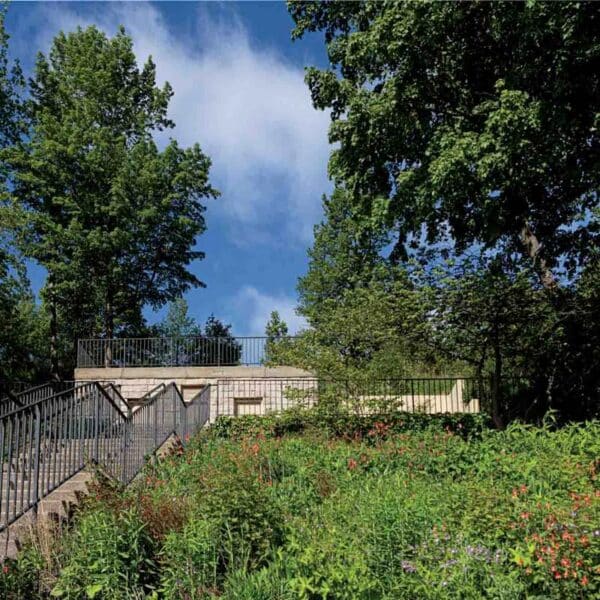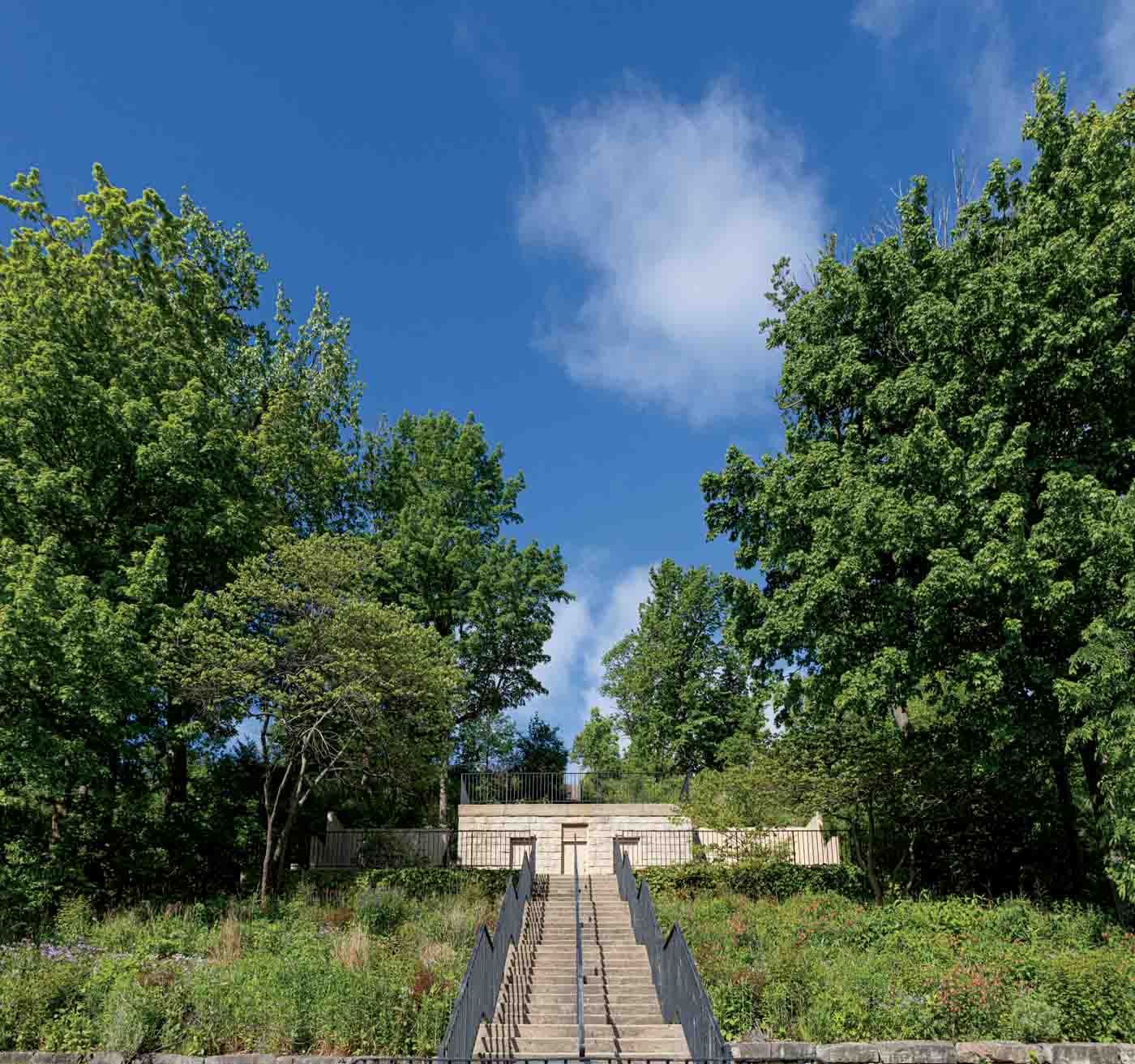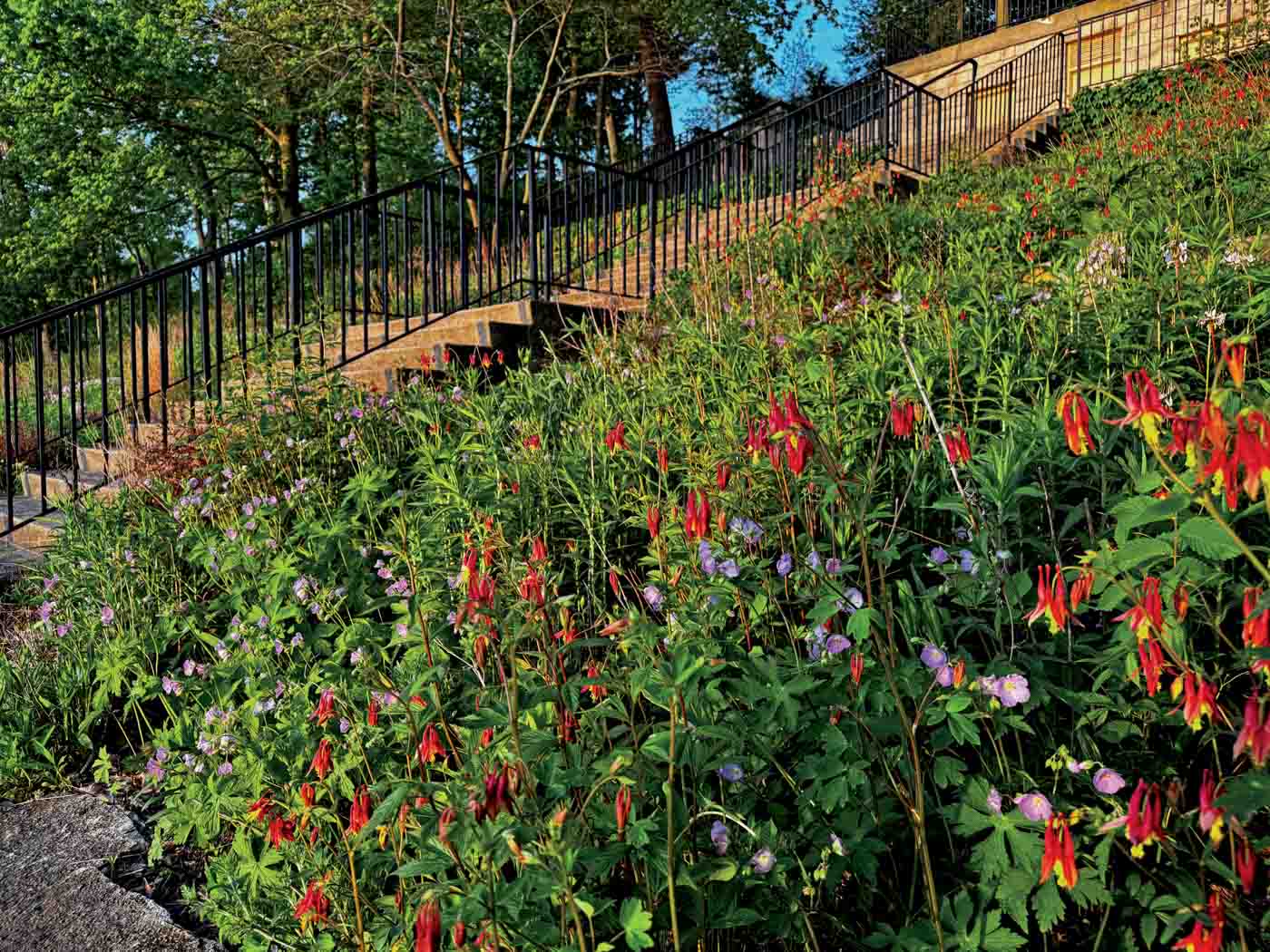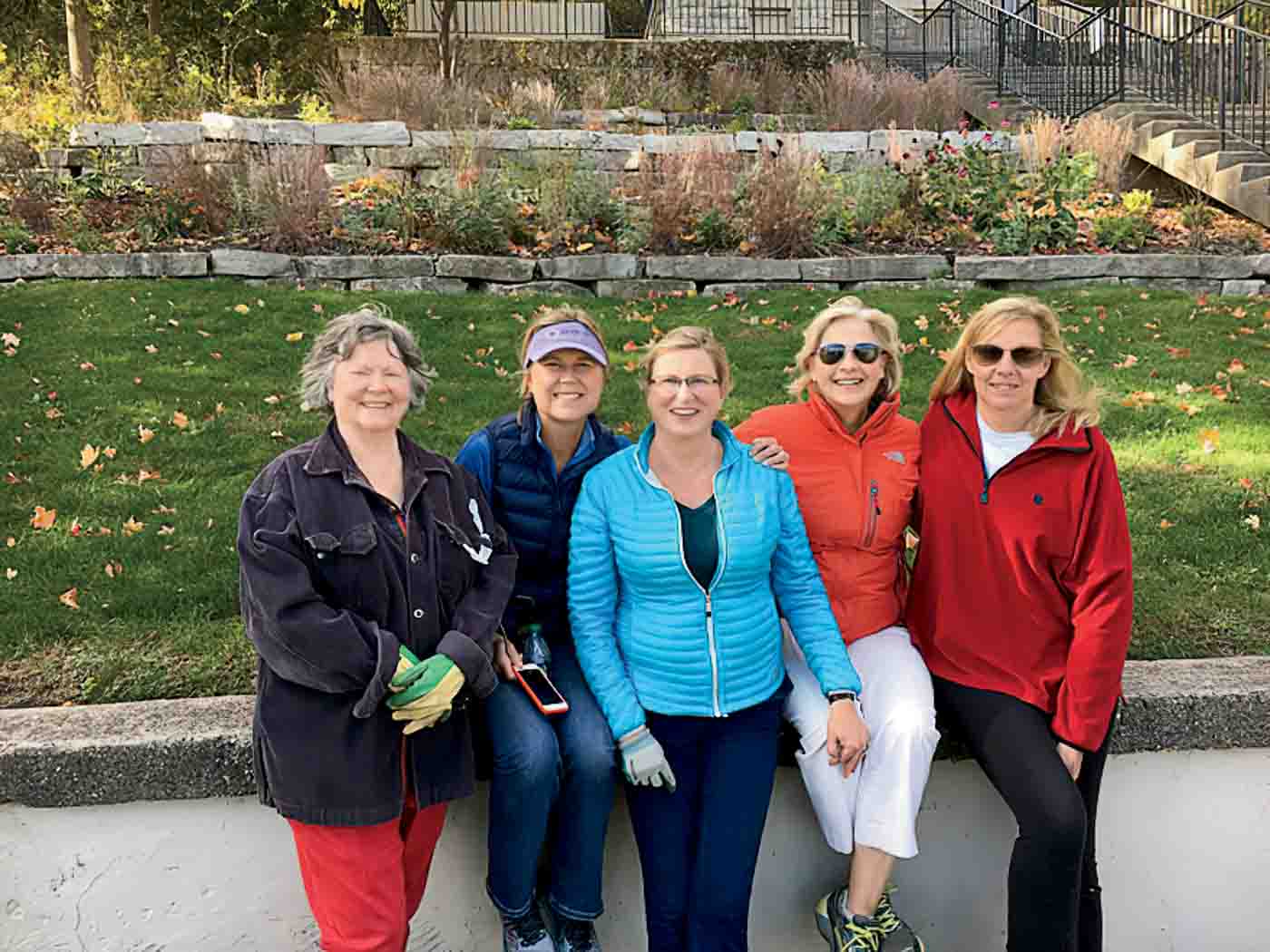NURTURING NATIVE BEAUTY
By Monica Kass Rogers
PHOTOGRAPHY BY MONICA KASS ROGERS
By Monica Kass Rogers
PHOTOGRAPHY BY MONICA KASS ROGERS

Perched at the base of the steep incline that is home to Lake Forest’s Belvedere Garden, Jennifer Fiocco looks bright as the blossoms that dot the way up the hill. Newly appointed chair of the garden, Fiocco is thrilled to be working with other members of the Junior Garden Club of Lake Forest (JGCLF) to tend and grow this beautiful and very visible native garden.
Fiocco, a University of Illinois Extension Master Gardener, has worked with plants in wide-ranging capacities. From her youthful tending of strawberries on the Pacific coast in small-town Oregon to establishing sustenance gardens for west African villagers in Niger as an agriculture extension agent with the Peace Corps to chairing Lake Forest’s Cherokee Elementary School Garden—growing produce that has made its way into student lunches—she’s met many challenges. However, working with JGCLF’s continued evolution of the Belvedere Garden is a fascinating endeavor all its own.

Belvedere (Italian for “beautiful view”) was chosen as the name for the site by architecture firm Stanley Anderson & Associates which built a bathhouse and stairs there in 1965. The gardens weren’t established until 2006. Located on both Junior Garden Club Members Jane Hauck, Debbie Daniel, Rommy Lopat, Nancy Clemens, and Kim Neill. Photo courtesy of the Junior Garden Club of Lake Forest sides of the stairs leading down to Forest Park Beach, the steeply graded garden is an ongoing ecological experiment. “You have conditions here that are quite unique,” explains Kim Neill, a two-term JGCLF past president and co-chair with Rommy Lopat of the club’s civic committee that planned and planted the garden in 2016. “The garden is on an east-facing, 70-foot slope with water pushing down from the top to find its way to Lake Michigan at the same time that you have lake water misting up, colder temperatures, and very strong wind conditions.”

As such, the Belvedere Garden has become a testing ground for native Illinois plants and flowers that must meet many requirements. The plants must be hearty enough to survive the harsh lakeside bluff conditions, offer beautiful seasonal interest year-round, and attract butterflies and birds.

At last count, there were more than 25 plant species that met the challenge: everything from Prairie Twilight Penstemon and Purple Coneflower to Wild Blue Indigo and Columbine, plus Solomon’s Seal, Wild Ginger, Shooting Stars, and more. Each adds interest, with selections aimed to reach peak glory during the summer when the beach is most active, then changing hue in the fall.
“Summer is when the garden is at its best,” says Fiocco. “Coneflowers and Black-eyed Susans are in full bloom, attracting bees and butterflies. Milkweed is in full swing, feeding Monarch caterpillars. Columbines add unique charm with their intricate spurred flowers. It’s fantasia!” Because many of the plants are pollinators, the site becomes a summer spectacle of butterflies, making it even more unique.
“Swallowtails, Great Spangled Fritillaries, Monarchs, Cloudywing Skippers … it’s just incredible,” says Neill. “You will see more butterflies here than anywhere else on the North
Sign Up for the JWC Media Email